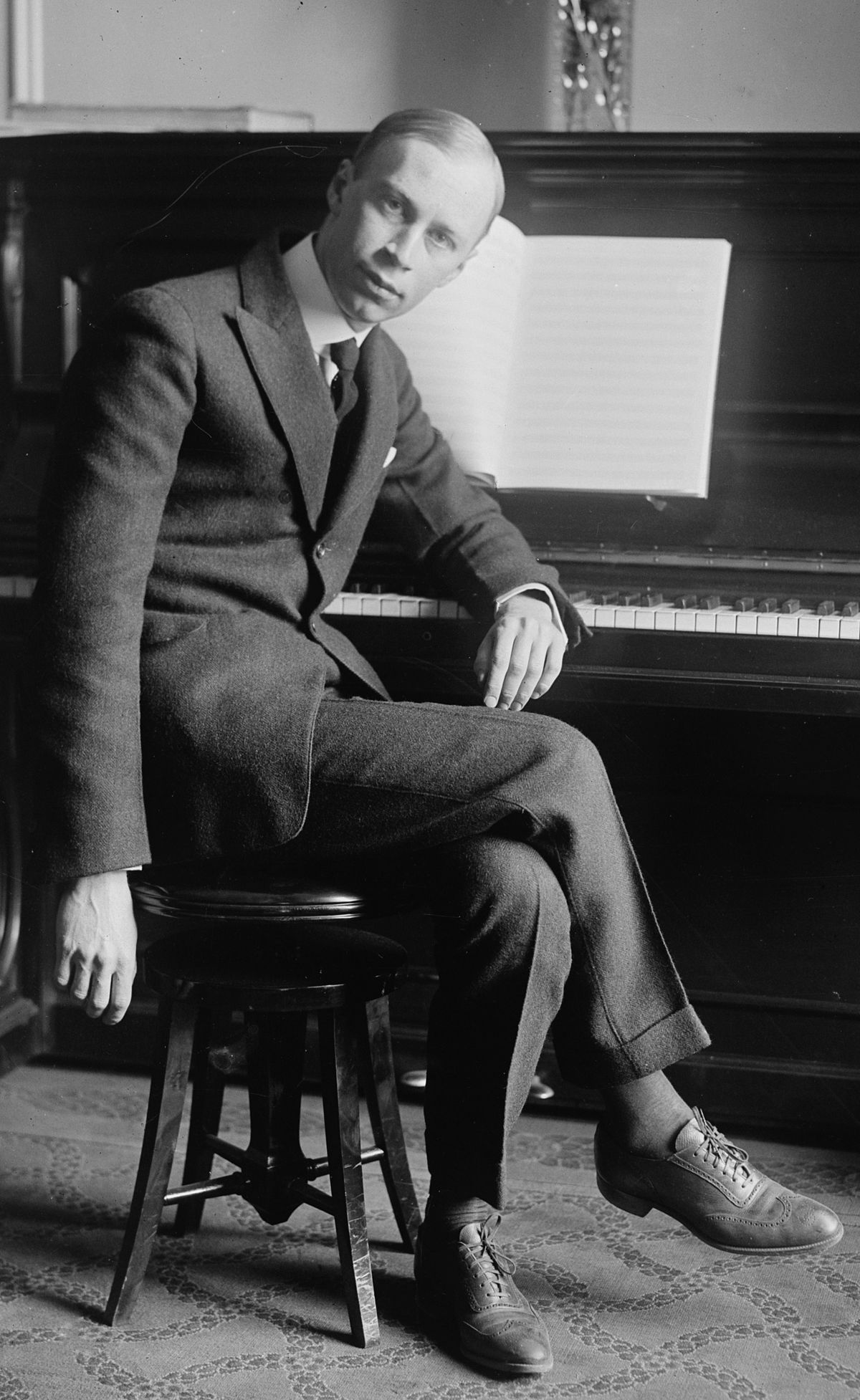Two Prokofiev Pieces To Get You Through A Holiday Weekend

I’m having such a good time reading about Prokofiev, so much so that I do not care any longer if Prokofiev month feels like a chore to readers. Prokofiev, perhaps even more so than composers I’ve previously focused on, lived and wrote throughout such a transitionary period in world history––the first half of the 20th century––that trying to encapsulate a singular style or motif or theme feels nearly impossible. Though he was ignorant to politics and widely uninterested in the, uh, general insanity of the various Russian revolutions, Prokofiev often found himself between musical styles and influences. As a young and impulsive artist, freshly out of his conservatory training, it was hard for him to nail down what precisely made him Prokofiev.
This week, there are two different pieces I want to focus on, both of which illuminate different sides of Prokofiev’s creative personality. The first is known as the Scythian Suite (all of the music today comes from Prokofiev: The Complete Symphonies, London Symphony Orchestra, 2013) which was an adaptation of a failed and relatively disliked ballet that Prokofiev wrote earlier in his career known as Ala and Lolly. Both the ballet and the suite are meant to depict the Scythians, a Eurasian nomadic people from modern-day Iran. They were widely present across parts of Russia, Ukraine, and even China some several hundred years ago (more than one thousand years before Prokofiev was writing about them).
Upon first listen, it is… well, it’s a lot. It’s very brassy, percussive. The opening few minutes of the first movement Introduction To Veles and Ala is loud and in-your-face. It’s a person realizing they have a full orchestra and a full percussion section with which to make a lot of fucking noise. It’s kind of no wonder that the original ballet’s patron, Sergei Diaghilev, was like, “Hmm, no thanks?” To quote my big Prokofiev book, the suite relies on “harsh and bristling dissonances.”
Even so, I’m partial at the very least to the second movement, The Evil God And Dance Of The Pagan Monsters (tag yourself, I’m Evil God). It could be that I’m easily seduced by a fun xylophone part, but this one makes the most use of its dissonant style and percussive texture. There’s one other core issue with Scythian Suite. I’m sure longtime fans of the column will know it, so say it with me: this shit sounds a lot like Stravinsky.
Remember Stravinsky? The man who traumatized me with Petrouchka? If ever you were in search of dissonant ballets, Stravinsky was your man. And at the time in which Prokofiev was working on the Scythian Suite, Stravinsky was the composer to look to. There is the famous story in which Stravinsky’s The Rite Of Spring essentially caused riots when it premiered, its sound so new and alien to its listeners. There was a more muted version of this event at Prokofiev’s premiere of Scythian Suite: Alexander Glazunov, another Russian composer, walked out before the end, the timpanist broke the skin of the timpani with his mallet, a cellist loudly complained he was only playing this suite to support his family. What a bad time for everyone. Even listening now, I can’t say I’m overly fond of Scythian Suite as a whole—its third movement, Night, is profoundly tedious—but there are glimmers of something interesting and humorous and wonderfully textured as is Prokofiev’s later writing.
Two years later, Prokofiev completed his first symphony, the “Classical” Symphony, and by far his most popular symphony to date. Its sound is altogether completely different than Scythian Suite written in a style best known as neoclassical. And before you’re like, “what does that mean, neoclassical, I barely understand what any other genre means?” I will explain: think about classical music—your Haydns, your Mozarts, even your early Beethovens, got it? Okay, now, it’s that, but new. This was Prokofiev doing his best impression of those guys, but not in the way he had youthfully aped Stravinksy’s style. This time it was, bear with me, a bit. A joke. You’re supposed to be in on the “Classical” Symphony. Recognize its themes and rhythms and what he’s doing.
In his autobiography, Prokofiev writes:
If Haydn had lived in our era, I thought, he would have retained his compositional style but would have also absorbed something from what was new. That’s the kind of symphony I wanted to compose: a symphony in the classical style. Then, when it started to come together, I renamed it as the “Classical” Symphony. I called it that for several reasons: first of all, because it was easier that way; secondly, out of naughtiness and a desire to “tease the geese,” secretly hoping that in the end I would have it my way if the title “Classical” stuck.
And the “Classical” Symphony does create a type of whiplash. It’s like Mozart, indeed, or Haydn, but tweaked slightly. A remix, if I’m allowed to call it that. And it’s short, too. No longer than about fifteen minutes, just like the symphonies of old. I promise you’ll like this one because, well, it’s written to be liked. Prokofiev wants you thoroughly in on the joke, and you will be.
The notable movement here is the third one, the Gavotte. Only a minute and a half in length, it’s a very cheeky piece of music. A perfect little dance between strings and woodwinds. The melody is hummable and straight-forward. Prokofiev’s earlier and later works are so exponentially more difficult than this one that the simplicity of it is a joke on itself. Regardless, though, there’s a ruefulness throughout: Prokofiev knew he couldn’t be Stravinsky and he knew he couldn’t be Haydn. So who was there left to be?
